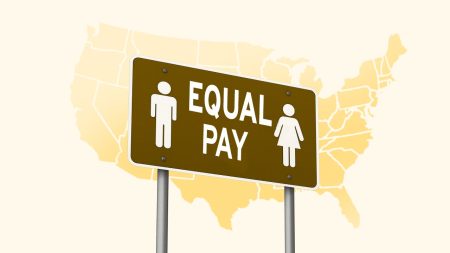Image by Getty Images; Illustration by Bankrate
The “save 10 percent of your income for retirement” rule is a popular money chestnut and may even be the ideal savings target for you. If you’re in your 20s. And you invest wisely. And you nail down your future budget and don’t encounter any pricey surprises in the coming decades that throw your plans off track.
All those pesky caveats? They’re why pithy financial rules of thumb — and how they play out for real people — start to fall apart. Often, there’s a better, more personalized solution for your financial situation. (A financial advisor can help you devise a plan that is tailored to your individual needs.)
Here’s what’s missing from the “save 10 percent” recommendation and how to come up with a savings target better suited to your current financial situation and future income needs.
1. ‘Save 10%’ is only part of the rule
What’s missing from the “save 10 percent” rule of thumb? The rest of the sentence.
Here it is in its full glory: “Save 10 percent of your income starting in your mid-20s or early 30s and every year thereafter until you’re in your 60s, and, based on average market returns, inflation, assumed spending levels and a few other factors, you’re statistically likely to have enough money to enjoy a secure and comfortable retirement.”
If those qualifiers describe you, then great! Time and compound interest work wonders for savers who start early. Plus, it saves your future self from ulcers and self-recrimination brought on by trying to make up for lost time.
A 401(k) match counts toward your overall retirement savings rate. So if you’re aiming to save 15 percent and your company matches 4 percent of your contributions to the plan, your personal savings target is 11 percent.
The rule for those of us who have only a vague recollection of our youth? Brace yourselves.
2. 10% might be too conservative — by a lot
If your 20s are a fuzzy memory and you’re just now starting to invest for the future, the 10-percent-savings target probably won’t cut it if your goal is to have enough money to maintain your current lifestyle in retirement. (We italicized that last part because it’s important.)
What’s the savings rule of thumb for you if you’re just now starting to tuck money away for retirement? Here’s what Charles Schwab’s mathletes say:
| Age you start saving | Percent of gross annual income to save to maintain current lifestyle in retirement |
|---|---|
| 25 | 9%-13% |
| 30 | 13%-18% |
| 35 | 17%-22% |
| 40 | 21%-28% |
| 45 | 26%-35% |
| 50 | 33%-43%+ |
As the table illustrates, someone who doesn’t start socking away money until they’re in their 40s will need to save two to three times as much of their income than the investor who started before they turned 35.
Depressing? Yes. But don’t start mathing out your ideal savings rate just yet. There’s more…
Need an advisor?
Need expert guidance when it comes to managing your investments or planning for retirement?
Bankrate’s AdvisorMatch can connect you to a CFP® professional to help you achieve your financial goals.
3. Your savings rate is not the only input that matters
Your current savings rate is just one input in the retirement-readiness calculation. There are other moving parts that feed into the equation that will help you figure out what your true savings target should be. Here are some important ones:
When you plan to retire: The 10 percent rule (and other calculations) assume that you’re going to retire full stop in your mid-60s. It may be different if you retire earlier or continue to work in some capacity past that age.
Your future lifestyle: As referenced above, the Schwab savings guidelines are designed so that a retiree maintains the same standard of living they had when working. For reference, many retirement planning models use an 80 percent income-replacement model to calculate future needs.
Pre-set assumptions are just that — assumptions. Your mileage will vary based on your actual expenses. Downsizing, upgrading, moving to a cheaper or more expensive locale in retirement — all of these moves affect your future income needs and current savings targets.
Keep in mind, you’ve already been living on less than 100 percent of your income — your salary minus the percentage of money you’ve been stashing away.
Your investment returns: You can’t go back in time for a do-over, but you can close the savings cap a few other ways. One is to tilt your asset allocation mix more toward growth — with growth stocks or a target-date mutual fund set further in the future than your actual planned retirement timeline — but only to a level that allows you to sleep at night.
“Other” retirement income sources: Personal savings will provide a big chunk of the money you need to cover future expenses. But don’t forget about other sources of income.
The average retired worker receives roughly $1,900 per month from Social Security, according to the latest figures from the Social Security Administration. The amount you’ll receive is based on how much you earned during your working life, the age you start taking benefits and other factors. (Here’s a breakdown of how Social Security benefits are calculated.)
How to calculate a realistic target savings rate
Running the numbers — your numbers — takes the guesswork out of figuring out how much you really need to save. Here are some tools that make easy work of all the math.
The “tell me now” option: For immediate gratification, a retirement calculator incorporates all of the inputs listed above to give you a snapshot of your future savings needs and whether you’re on track.
- Bankrate’s free retirement calculator estimates the gap — or surplus — between what your current savings will provide and what you’ll need by the time you retire.
- A retirement income calculator presents the same information in a different context to show how much monthly income your savings will generate.
The “let me tinker under the hood” option: Financial planning software lets you track, analyze, project and tinker with what-if scenarios on an ongoing basis based on your actual financial situation. These powerful tools can identify speed bumps and opportunities in a range of areas. DIY types will appreciate the ability to model out different outcomes and get granular insights into how to optimize everything from current and future taxes to Social Security withdrawal strategies. (See our review of the best financial planning software.)
The “help me figure out my options” option: A retirement planning pro can help you navigate all the complexities of managing your finances — from savings challenges to investing recommendations — and come up with a detailed plan for achieving your goals. Bankrate’s financial advisor matching tool can help you find an advisor in your area.
Editorial Disclaimer: All investors are advised to conduct their own independent research into investment strategies before making an investment decision. In addition, investors are advised that past investment product performance is no guarantee of future price appreciation.
Read the full article here









